Seán Keating PPRHA HRA HRSA (1889-1977)
Signature: signed, titled and with original price on handwritten label preserved on reverse; also dedicated [John Keating / To Harry Clarke / 29 Aug 1917] on the stretcher on reverse and in Irish script on canvas; with original Daniel Egan framing label
Medium: oil on canvas
Size: 30 x 30in. (76.20 x 76.20cm) Provenance: A gift from the artist to Harry Clarke RHA (1889-1931); Private collection; James Adam & Bonhams, 7 December 2005, lot 78; Private collection Exhibited: RHA, Dublin, 1918, catalogue no. 339 (Lent by Harry Clarke ; 'The Arts and Crafts Movement: Making It Irish', McMullen Museum of Art, Boston College, USA, 6 February to 5 June, 2016 (lent by the present owner); 'Conflicting Visions in a Turbulent Age 1900–1916', Crawford Art Gallery, Cork, 3 June to 20 August 2016 (lent by the present owner); Literature: N., Gordon Bowe, The Life and Work of Harry Clarke Dublin, 1989, plate no. 64; Éimear O'Connor, Seán Keating: Art, Politics and Building the Irish Nation (Kildare: Irish Academic Press, 2013), pp. 63-4; Éimear O'Connor, Conflicting Visions in a Turbulent Age 1900-1916, catalogue for eponymous exhibition, Crawford Art Gallery Cork (Cork: Crawford Art Gallery, 2016), pp. 60-1. Éimear O'Connor, 'Harry Clarke and Seán Keating: Art, Inspiration and the Aran Islands' in R. Kennedy, A. Griffiths & M. Helmers (eds.), Harry Clarke and Artistic Visions of the New Irish State (Kildare: Irish Academic Press, forthcoming November 2018), chapter 5 Harry Clarke and Seán Keating met at the Dublin Metropolitan School of Art in 1911. With interests in common they became friends and it was Clarke who introduced Keating to the Aran Islands in c.1912. While the islands had a profound effect on Keatin...Read more Harry Clarke and Seán Keating met at the Dublin Metropolitan School of Art in 1911. With interests in common they became friends and it was Clarke who introduced Keating to the Aran Islands in c.1912. While the islands had a profound effect on Keating's artistic identity, and he continued to visit until 1965, as it turned out Clarke made his final trip there in 1915, a few months after he began the commission for his series of eleven windows for the Honan Chapel, Cork. As St Gobnait is traditionally associated with Ballyvourney in Co. Cork and with the Aran Islands, Keating's painting offers evidence of the friendship between the two men and their mutual interest in the islands at the time. The painting simultaneously acknowledges Clarke's extraordinary ingenuity evident in his tour de force portrayal of St Gobnait which was installed in the Honan Chapel in 1916, but possibly 'thought out' during that last trip to Aran in 1915 with Keating at his side. Yet Thinking out Gobnait is not simply an image of Clarke thinking about his work. It is an allegory drawn from a composite of the picturesque ruins of the ancient churches of Inis Oírr, and influenced in style by William Orpen's The Holy Well (1916: NGI). The painting shows Clarke sitting on a grave slab within the ruins of Teampall Chaomháin (St Kevin's church) on Inis Oírr, along with a holy water font at his feet, and a holy well to the bottom right of the image. The tree, known as the 'tree of Inisheer', had always been associated with St Gobnait and her church on the island Cill Ghobnait. Keating simply removed the tree from its original place and positioned it by Teampall Chaomháin, thereby introducing a simultaneous visual reference to Clarke's commission. But it is the depiction of Clarke on the grave slab in Teampall Chaomháin that denotes the crucial, though symbolic emphasis in Keating's portrayal of his friend. The church is traditionally associated with miraculous cures; those who lay on the grave slab were, apparently, healed. Clarke had not been well while 'thinking out Gobnait', and Keating suggests, perhaps, that all might be alright now that his friend had reclined on the miraculous grave slab. An inscription in old Irish and another in English on the reverse of the work, both in Keating's hand, reveal that he gifted the painting to Clarke in 1917. Anxious to be elected to the RHA, Keating borrowed the painting from Clarke to exhibit in the annual exhibition in 1918. He was elected an Associate of the Academy later that year.
Seán Keating PPRHA HRA HRSA (1889-1977)
Signature: signed, titled and with original price on handwritten label preserved on reverse; also dedicated [John Keating / To Harry Clarke / 29 Aug 1917] on the stretcher on reverse and in Irish script on canvas; with original Daniel Egan framing label
Medium: oil on canvas
Size: 30 x 30in. (76.20 x 76.20cm) Provenance: A gift from the artist to Harry Clarke RHA (1889-1931); Private collection; James Adam & Bonhams, 7 December 2005, lot 78; Private collection Exhibited: RHA, Dublin, 1918, catalogue no. 339 (Lent by Harry Clarke ; 'The Arts and Crafts Movement: Making It Irish', McMullen Museum of Art, Boston College, USA, 6 February to 5 June, 2016 (lent by the present owner); 'Conflicting Visions in a Turbulent Age 1900–1916', Crawford Art Gallery, Cork, 3 June to 20 August 2016 (lent by the present owner); Literature: N., Gordon Bowe, The Life and Work of Harry Clarke Dublin, 1989, plate no. 64; Éimear O'Connor, Seán Keating: Art, Politics and Building the Irish Nation (Kildare: Irish Academic Press, 2013), pp. 63-4; Éimear O'Connor, Conflicting Visions in a Turbulent Age 1900-1916, catalogue for eponymous exhibition, Crawford Art Gallery Cork (Cork: Crawford Art Gallery, 2016), pp. 60-1. Éimear O'Connor, 'Harry Clarke and Seán Keating: Art, Inspiration and the Aran Islands' in R. Kennedy, A. Griffiths & M. Helmers (eds.), Harry Clarke and Artistic Visions of the New Irish State (Kildare: Irish Academic Press, forthcoming November 2018), chapter 5 Harry Clarke and Seán Keating met at the Dublin Metropolitan School of Art in 1911. With interests in common they became friends and it was Clarke who introduced Keating to the Aran Islands in c.1912. While the islands had a profound effect on Keatin...Read more Harry Clarke and Seán Keating met at the Dublin Metropolitan School of Art in 1911. With interests in common they became friends and it was Clarke who introduced Keating to the Aran Islands in c.1912. While the islands had a profound effect on Keating's artistic identity, and he continued to visit until 1965, as it turned out Clarke made his final trip there in 1915, a few months after he began the commission for his series of eleven windows for the Honan Chapel, Cork. As St Gobnait is traditionally associated with Ballyvourney in Co. Cork and with the Aran Islands, Keating's painting offers evidence of the friendship between the two men and their mutual interest in the islands at the time. The painting simultaneously acknowledges Clarke's extraordinary ingenuity evident in his tour de force portrayal of St Gobnait which was installed in the Honan Chapel in 1916, but possibly 'thought out' during that last trip to Aran in 1915 with Keating at his side. Yet Thinking out Gobnait is not simply an image of Clarke thinking about his work. It is an allegory drawn from a composite of the picturesque ruins of the ancient churches of Inis Oírr, and influenced in style by William Orpen's The Holy Well (1916: NGI). The painting shows Clarke sitting on a grave slab within the ruins of Teampall Chaomháin (St Kevin's church) on Inis Oírr, along with a holy water font at his feet, and a holy well to the bottom right of the image. The tree, known as the 'tree of Inisheer', had always been associated with St Gobnait and her church on the island Cill Ghobnait. Keating simply removed the tree from its original place and positioned it by Teampall Chaomháin, thereby introducing a simultaneous visual reference to Clarke's commission. But it is the depiction of Clarke on the grave slab in Teampall Chaomháin that denotes the crucial, though symbolic emphasis in Keating's portrayal of his friend. The church is traditionally associated with miraculous cures; those who lay on the grave slab were, apparently, healed. Clarke had not been well while 'thinking out Gobnait', and Keating suggests, perhaps, that all might be alright now that his friend had reclined on the miraculous grave slab. An inscription in old Irish and another in English on the reverse of the work, both in Keating's hand, reveal that he gifted the painting to Clarke in 1917. Anxious to be elected to the RHA, Keating borrowed the painting from Clarke to exhibit in the annual exhibition in 1918. He was elected an Associate of the Academy later that year.
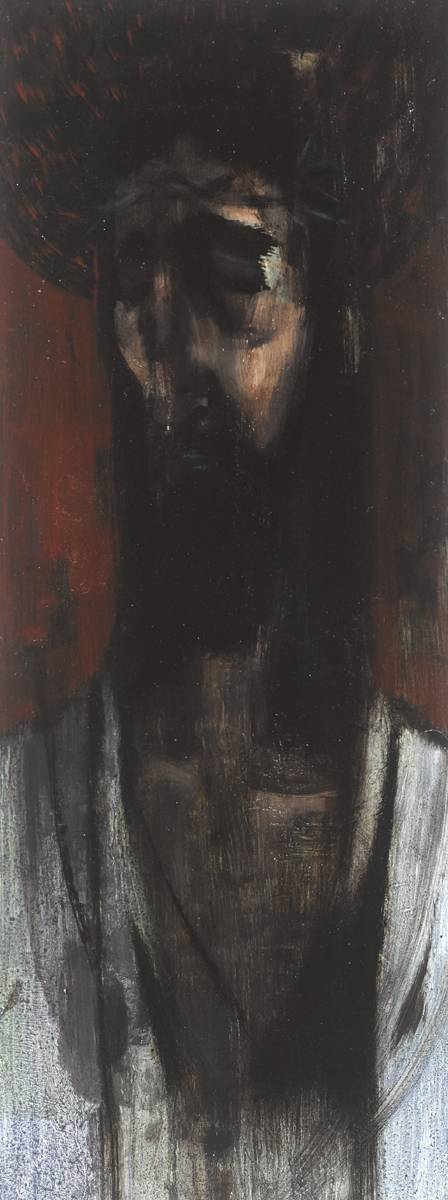

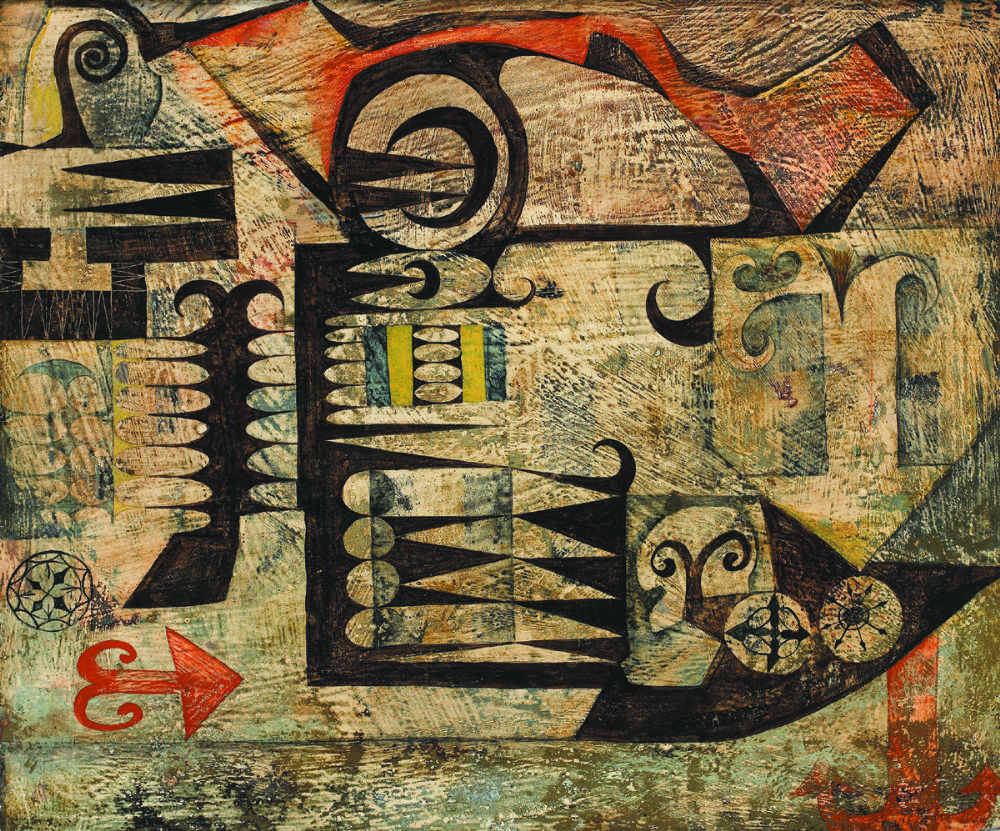
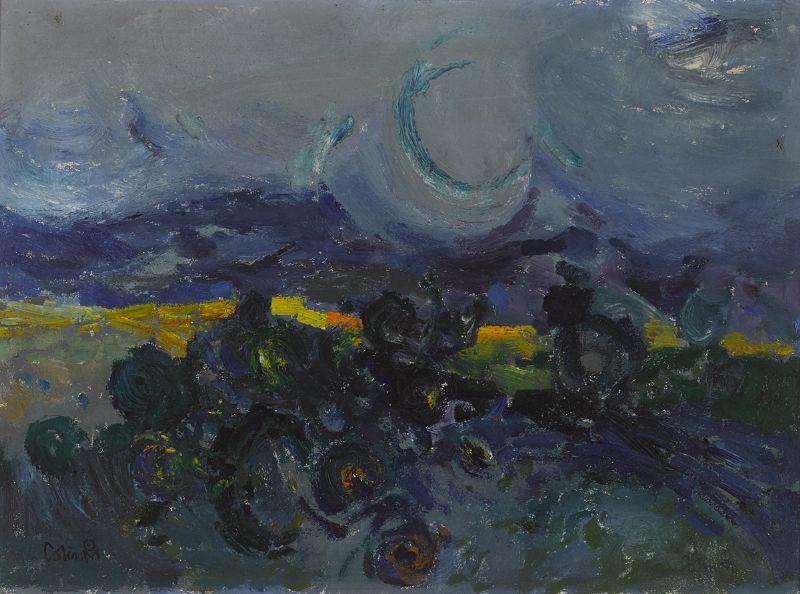
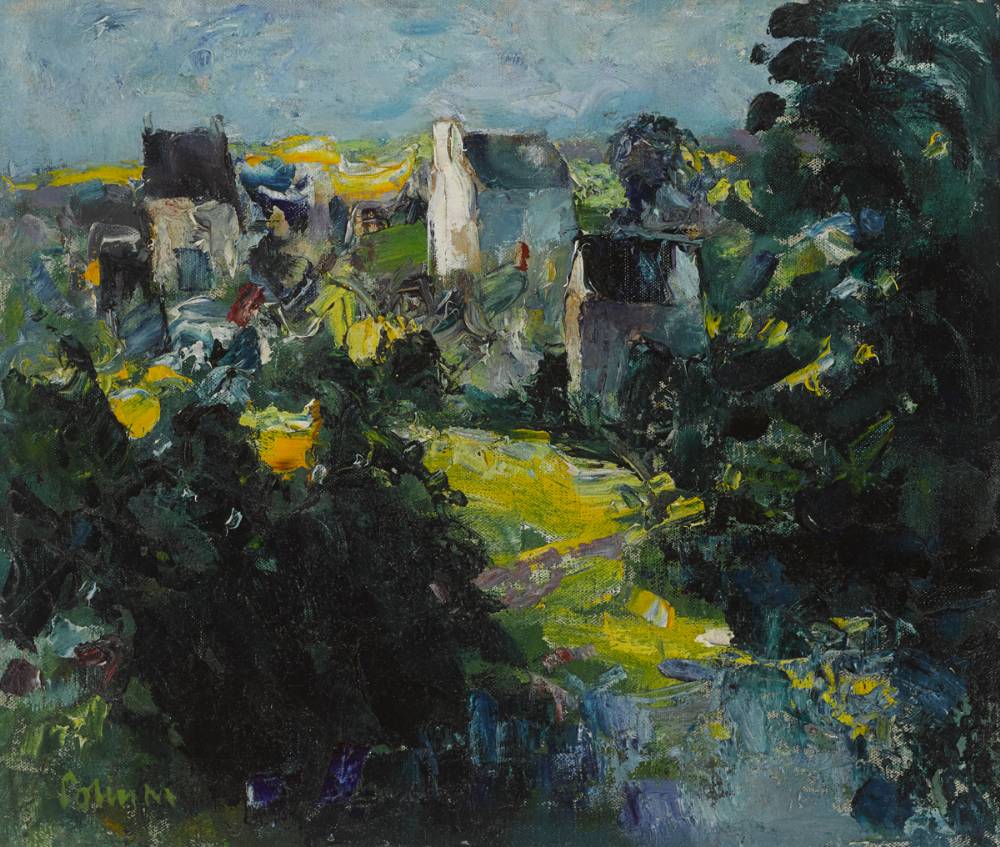
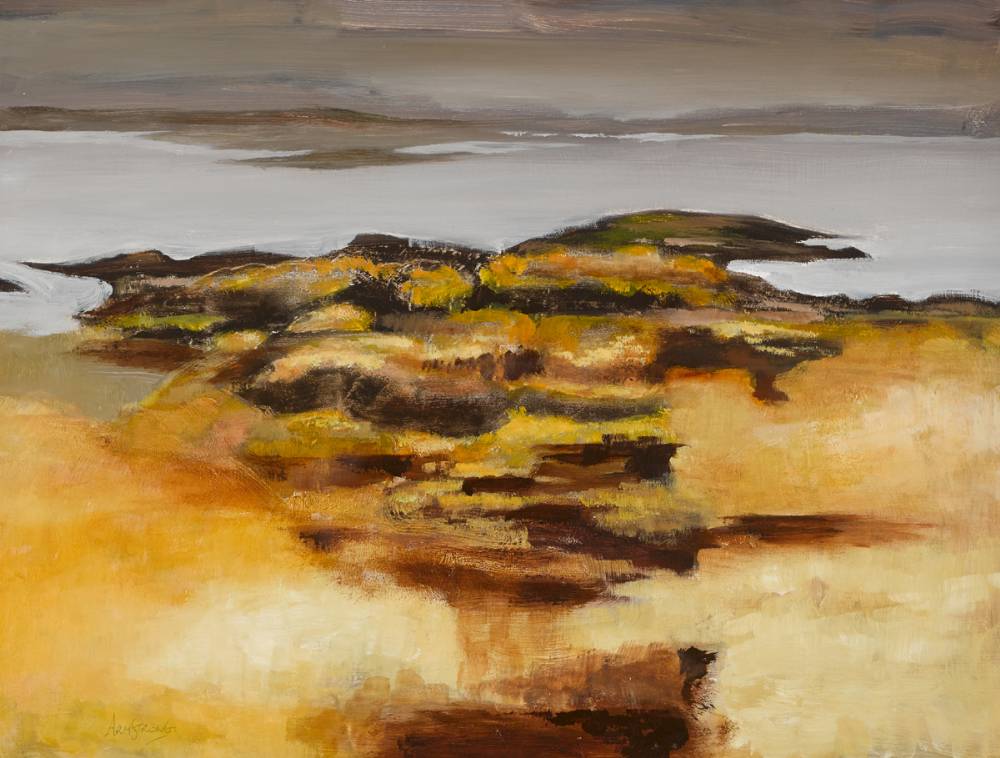
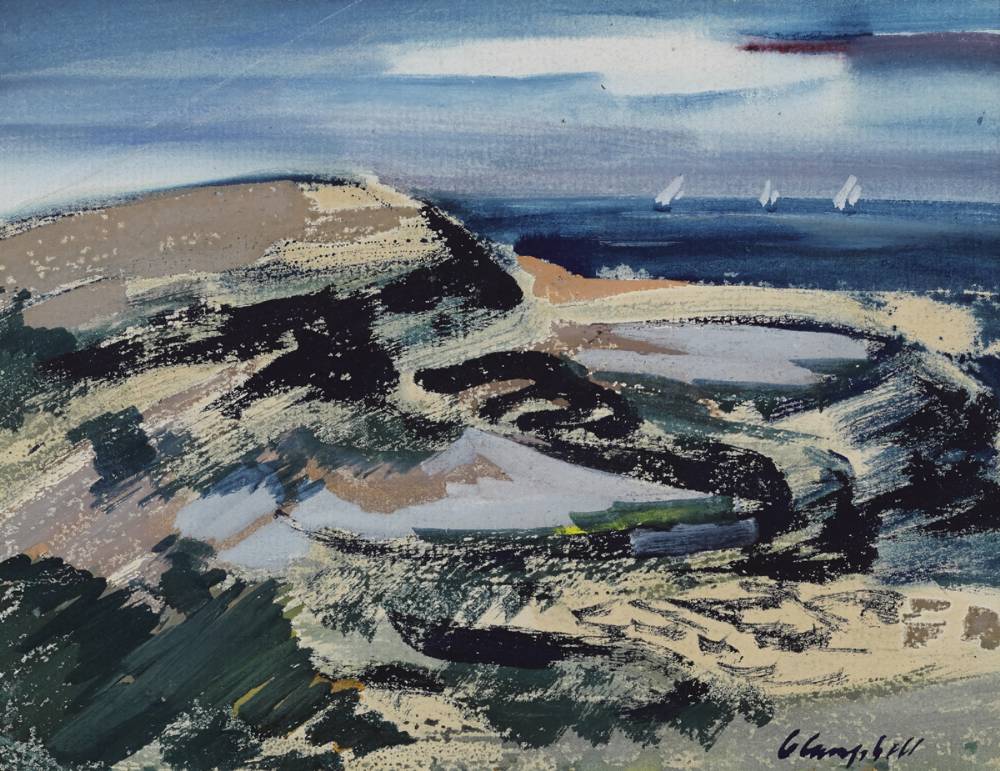
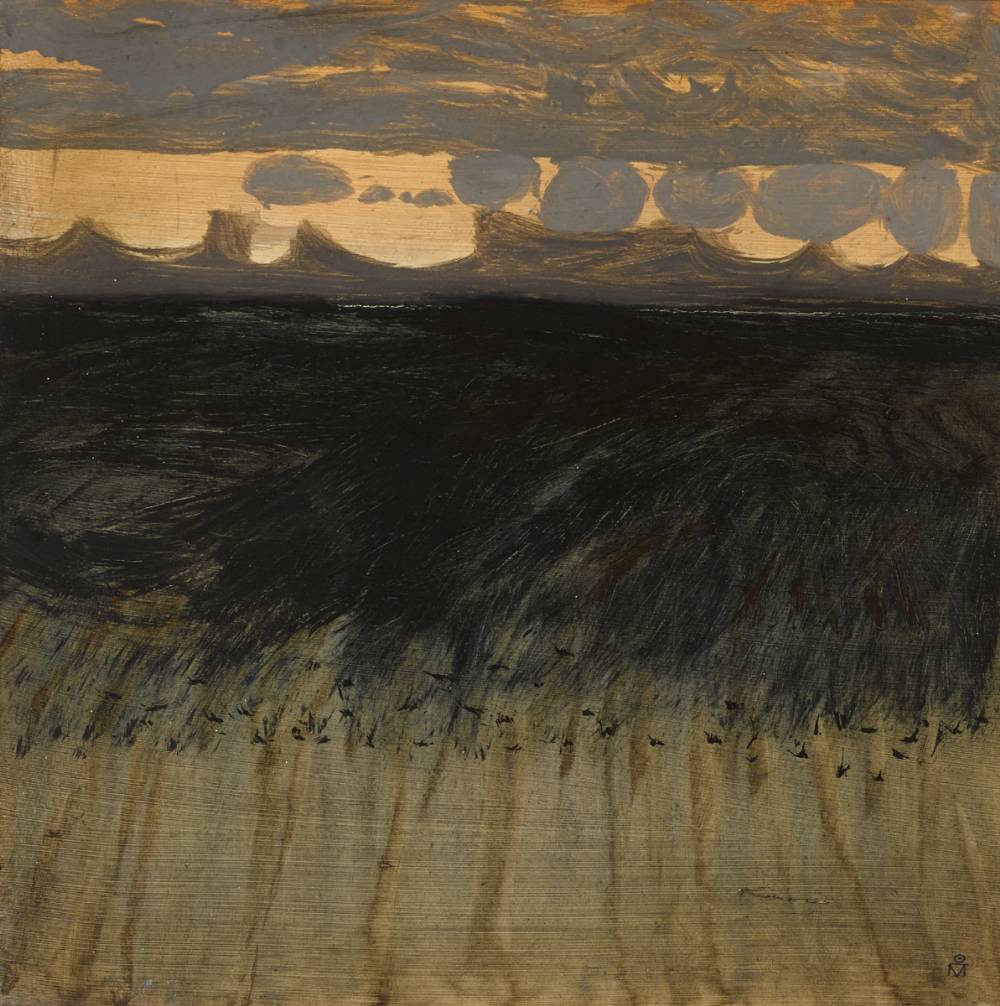
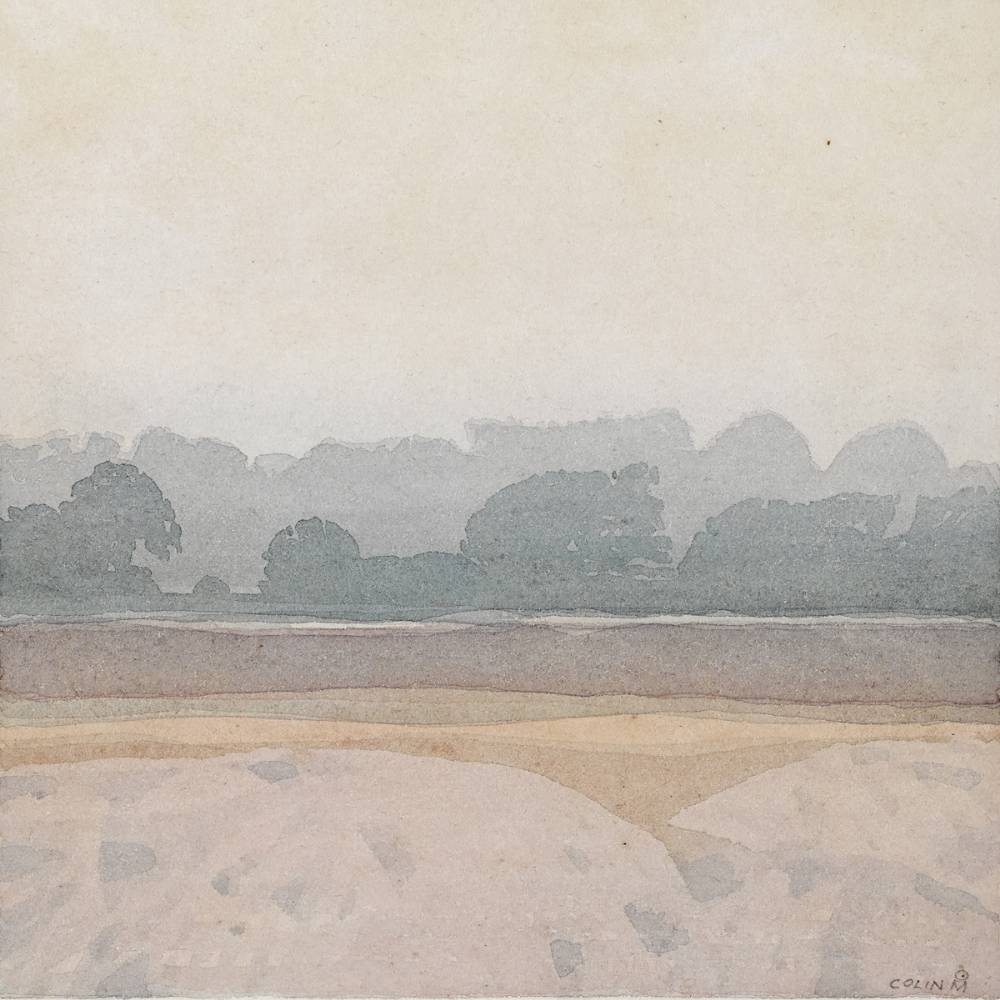

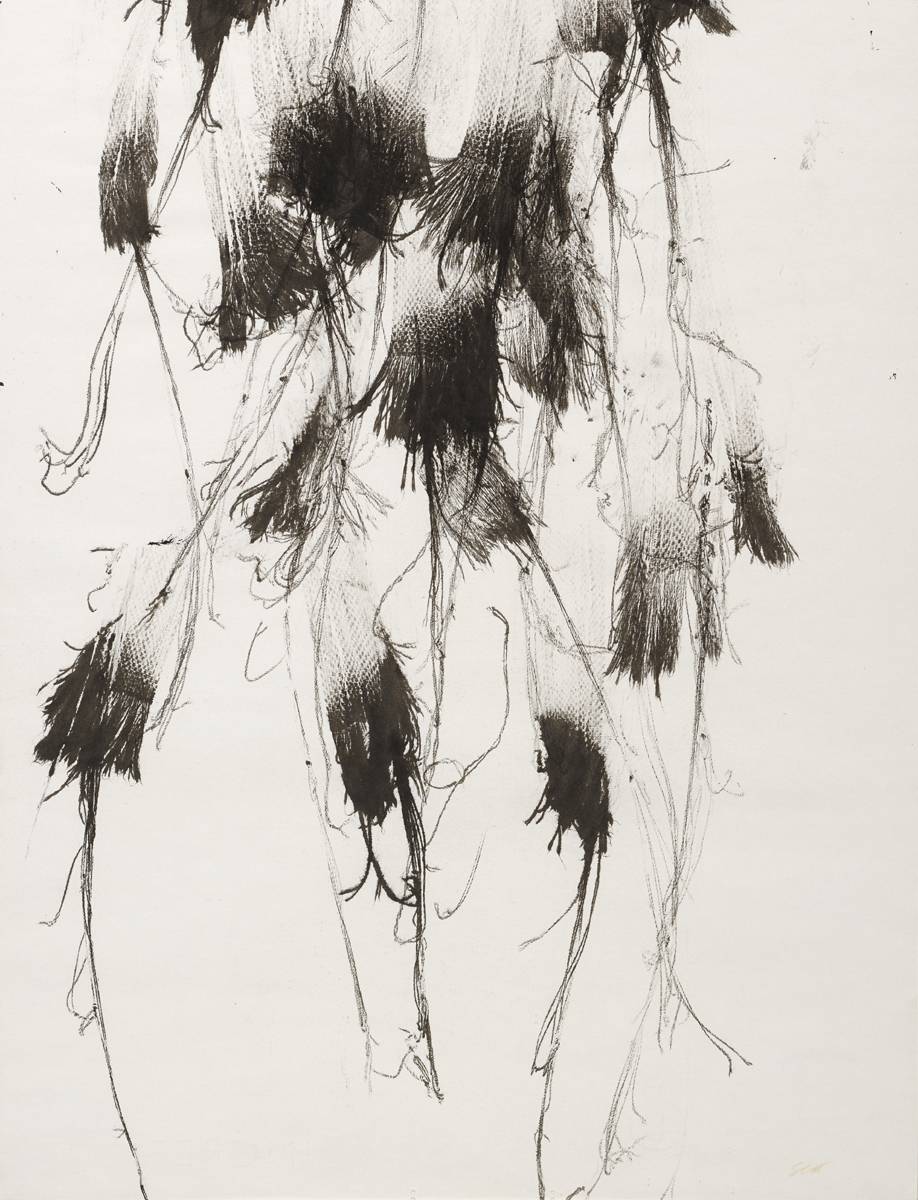
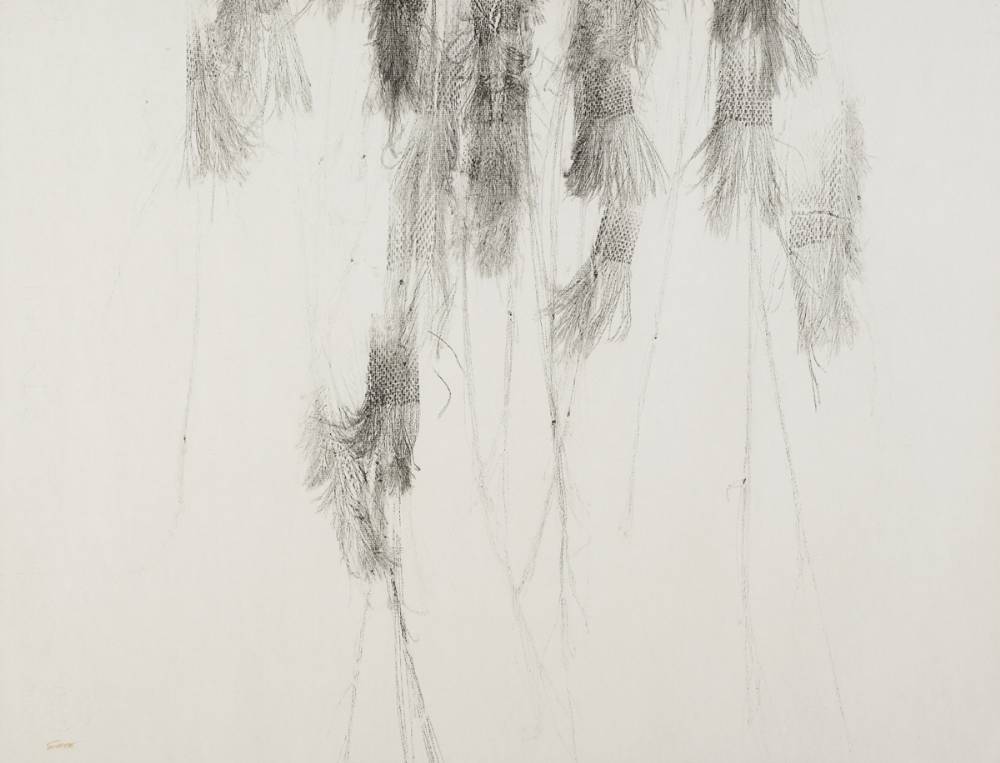
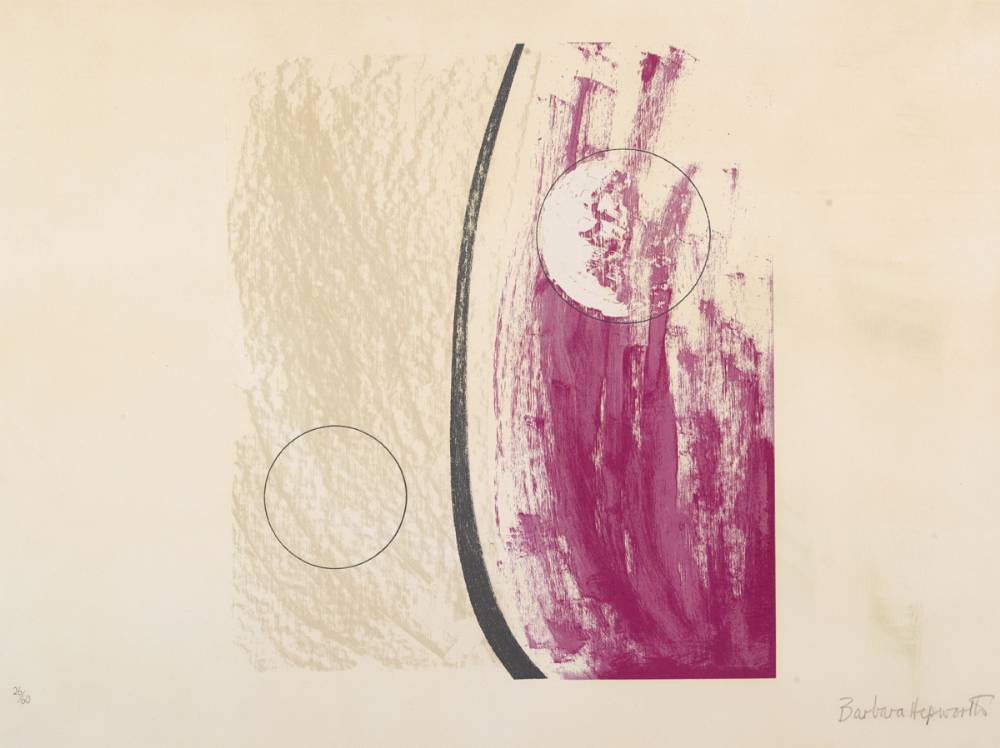

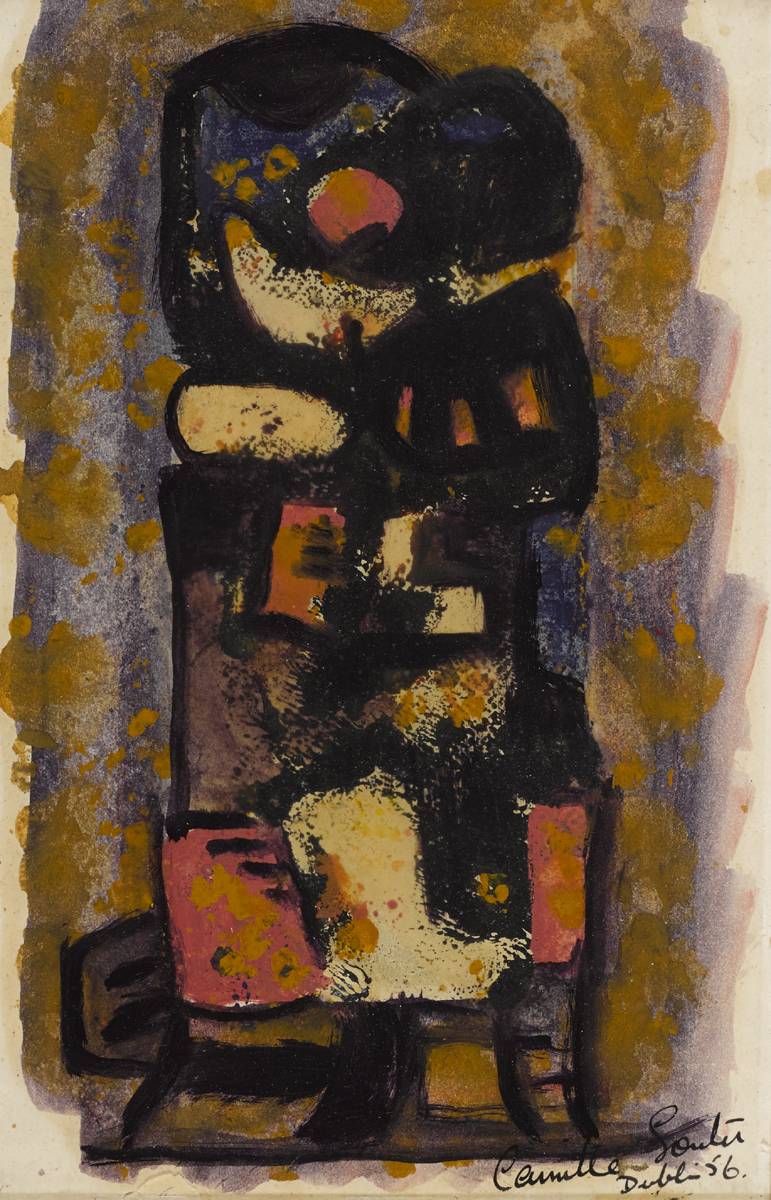
Testen Sie LotSearch und seine Premium-Features 7 Tage - ohne Kosten!
Lassen Sie sich automatisch über neue Objekte in kommenden Auktionen benachrichtigen.
Suchauftrag anlegen